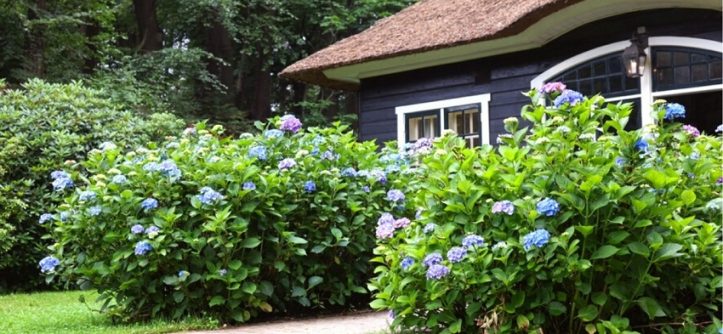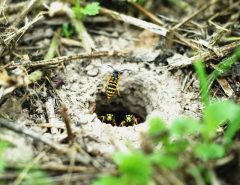When it comes to gardening and landscaping, one common question that often arises is whether it is okay to plant hydrangeas close to a house. Hydrangeas are beautiful flowering shrubs that can add charm and elegance to any garden. However, their proximity to the house can raise concerns regarding their growth patterns, root systems, and potential damage to the foundation. In this article, we will explore the considerations and factors involved in planting hydrangeas near your house.
Understanding Hydrangeas
Before delving into the specifics of planting hydrangeas near a house, it’s important to consider what side of the house do you plant hydrangeas on. This stunning flowering shrub is known for its large, showy flower clusters that come in a variety of colors, including pink, blue, white, and purple. Hydrangeas thrive in temperate climates and are favored for their ability to bloom throughout the summer months.
Factors to Consider
Growth Habits and Size
One crucial aspect to consider when deciding to plant hydrangeas close to a house is their growth habits and ultimate size. Hydrangeas can vary significantly in size, depending on the species and variety. Some hydrangeas can reach heights of 6 to 8 feet, while others are more compact, staying around 3 to 4 feet tall.
It is important to assess the available space near your house and choose hydrangea varieties that fit well within that space. Opting for compact or dwarf varieties can be a wise choice when planting near the house, as they are less likely to outgrow their designated area and cause potential issues.
Root Systems
Another factor to consider is the root system of hydrangeas. Like most plants, hydrangeas have a root system that expands and spreads underground. The extent of their roots depends on the specific species and the age of the plant.
When planting hydrangeas close to a house, it is crucial to ensure that their root systems will not interfere with the foundation or underground utilities. Large, invasive roots can potentially cause damage to the structure or disrupt drainage systems. Therefore, it is advisable to plant hydrangeas at a safe distance from the house, considering both the current and future growth of the shrubs.
Moisture Requirements
Hydrangeas have moderate to high moisture requirements, and they thrive in well-draining soil that retains moisture. Planting them too close to the house may lead to excessive moisture accumulation near the foundation, which can be detrimental to the stability and integrity of the structure.
To avoid potential issues, it is essential to assess the drainage patterns around your house and ensure that the soil is well-prepared before planting hydrangeas nearby. Amending the soil with organic matter and providing proper drainage can help mitigate any excess moisture concerns.
Best Practices for Planting Hydrangeas Near the House
Now that we have examined the key considerations, let’s discuss some best practices for successfully planting hydrangeas close to your house:
1. Choose Suitable Varieties
Opt for compact or dwarf varieties of hydrangeas that will not outgrow the space available near your house. Some popular choices include ‘Little Lime,’ ‘Bobo,’ or ‘Pinky Winky,’ which are known for their restrained growth habits.
2. Determine the Ideal Location
Identify a suitable location that provides the right amount of sunlight and shade for hydrangeas. Most varieties prefer morning sun and afternoon shade, as direct sunlight during the hottest part of the day can cause wilting and stress. Ensure that the chosen spot has well-draining soil and is not in the path of downspouts or areas with excessive moisture accumulation.
3. Prepare the Soil
Before planting, prepare the soil by incorporating organic matter, such as compost or well-rotted manure. This improves soil structure, enhances drainage, and promotes healthy root development.
4. Maintain Adequate Spacing
Provide enough space between each hydrangea plant to allow for proper air circulation and future growth. As a general guideline, aim for a spacing of 3 to 6 feet between individual plants, depending on the specific variety.
5. Implement Proper Watering Practices
Hydrangeas require regular watering, especially during dry spells. Ensure that the plants receive adequate moisture without overwatering, as excessive moisture can lead to root rot. Consider using a drip irrigation system or watering at the base of the plant to minimize moisture contact with the house’s foundation.
6. Monitor Growth and Prune as Needed
Regularly monitor the growth of the hydrangeas and prune them as necessary. Pruning helps maintain the desired shape and size while promoting healthy blooming. Be cautious not to prune excessively close to the house, as it can stimulate new growth towards the structure.
In conclusion, planting hydrangeas near a house can be a delightful addition to any garden, provided you consider and address the potential concerns. By selecting suitable varieties, assessing growth patterns, and implementing proper planting and maintenance practices, you can enjoy the beauty of hydrangeas while ensuring the integrity of your house. Remember to give hydrangeas enough space, prepare the soil adequately, and monitor their growth over time. With these considerations in mind, you can create a harmonious balance between your hydrangeas and your home.
Now that you have a better understanding of planting hydrangeas close to a house, go ahead and create a stunning garden oasis that will leave others behind!
Tags: close to house, foundation risks, gardening tips, home improvement, landscaping, outdoor plants, planting flowers, planting hydrangea



